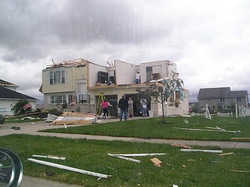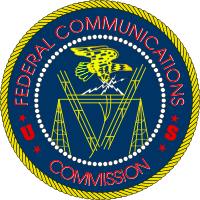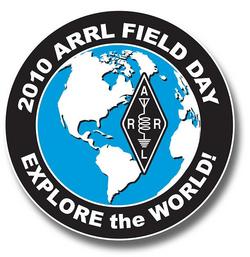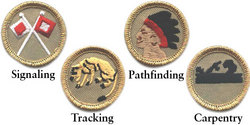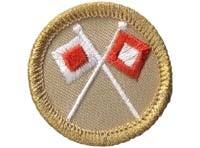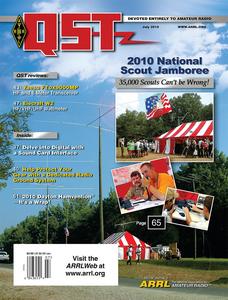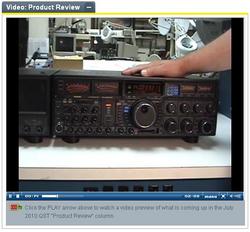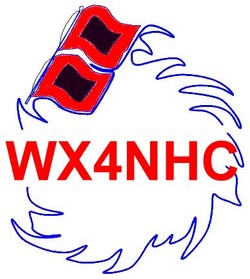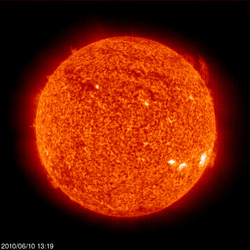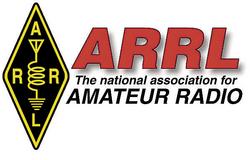 June 10, 2010 John E. Ross, KD8IDJ, Editor
| |||||||||||||
+ Available on ARRL Audio News + Public Service: Amateur Radio Operators Active during Severe Tornado Breakout in Northwestern Ohio
During the early overnight hours of Saturday, June 5 through Sunday, June 6, severe weather and tornadoes ripped across an area of Northwestern Ohio, laying a large path of destruction. ARES and SKYWARN groups in Erie, Huron, Sandusky and Wood Counties activated nets as early as 10:30 PM Saturday, with many not standing down until 4:30 AM the next day. According to ARRL Ohio Section Manager Frank Piper, KI8GW, traffic on the nets was filled with reports of severe weather damage, flooding and downed power lines. Read more here. + FCC News: In FCC Rule Making Proceeding, ARRL Supports Employee Participation in Drills
In March 2010, the FCC released a Notice of Proposed Rule Making (NPRM) (WT Docket No 10-72) that proposed to amend the Part 97 rules -- specifically 97.113(a)(3) -- governing the Amateur Radio Service. The new rules would provide that, under certain limited conditions, Amateur Radio operators may transmit communications on behalf of their employers during government-sponsored emergency and disaster preparedness drills. While current rules provide for Amateur Radio use during emergencies, the rules prohibit communications where the station licensee or control operator has a pecuniary interest, including communications on behalf of an employer, except for government-sponsored drills for which a waiver has been granted. The NPRM asked for comments from interested parties. As such, on May 24, the ARRL filed its initial comments and on June 7, filed its reply comments. The ARRL's filings reflect the position adopted by the Board of Directors at its January 2010 meeting. Read more here. + FCC News: FCC Dismisses California Ham's Petition to Amend Section 97.1 In September 2009, Gordon Schlesinger, W6LBV, of San Diego, California, filed a Petition for Rule Making with the FCC, seeking to amend Section 97.1 of the Commission's rules to account for changes in technology and amateur practice since the rule was adopted. On June 8, 2010, the FCC dismissed Schlesinger's Petition. Schlesinger proposed new text in his Petition that he claimed "is equivalent to a total restatement of the Basis and Purpose for the Amateur Radio Service, to account for the numerous and significant changes both in wireless technology and in the practice of the Amateur Radio art over the intervening decades since the present Basis and Purpose was adopted. The current Basis and Purpose, which consists of five goals for the Amateur Radio Service, appears to have been adopted more than 50 years ago. The dramatic change in both telecommunications technology and the practice of Amateur Radio over the past five decades strongly suggests that a review and reconstitution of the Basis and Purpose is in order." Read more here. + ARRL Field Day: Field Day Station Locator Service Returns for 2010
First introduced in 2008, the ARRL's Field Day Station Locator Service has proved a popular addition to the Field Day toolbox. This service -- an interactive map that helps amateurs or those interested in Amateur Radio find a Field Day site near them -- is free to clubs or individuals who will be operating public Field Day stations. Stations can also be listed by state or province. So far, hams in all 50 states and Puerto Rico have listed Field Day sites on the Field Day Locator. If your group would like to be a part of the Station Locator Service, it's easy to get started -- just go to the Field Day Station Locator Web site and follow the instructions (this is a different link than was printed in the Field Day packets). ARRL Field Day is the most popular on-the-air operating event in Amateur Radio. On June 26-27, join tens of thousands of Amateur Radio operators as they gather for a public demonstration of the Amateur Service. + Boy Scouts Revive Four Merit Badges for 100th Anniversary
In keeping with Boy Scouts of America's centennial theme -- Celebrating the Adventure, Continuing the Journey -- four retired badges have been brought back for the group's 100th anniversary. The effective date for earning these new merit badges -- Carpentry (1911-1952), Tracking (formerly Stalking, 1911-1952), Pathfinding (1911-1952) and Signaling (formerly Signaler, 1910-1992) -- is April 1, 2010; requirements must be completed no later than December 31, 2010. The contemporary merit badges closely resemble the original designs of their counterparts, but with a gold border, immediately identifying it as a 2010 historic merit badge. These four historical merit badges may be used toward a Scout's rank advancement.
"The Signaling merit badge is a great way to encourage hams who are already involved in Scouting to mentor this limited-time badge in their Troop and perhaps in other ways, such as camps," said ARRL Rocky Mountain Division Director Brian Mileshosky, N5ZGT; Mileshosky is the chairman of the ARRL's ad hoc Committee on Scouting. "Hams -- and especially clubs, that have more resources and volunteers -- who are not involved in Scouting at the present time but want to assist a Troop with earning the Signaling merit badge -- should contact their local BSA Council to inquire about Scoutmasters in their area to contact and offer their assistance." The requirements for the Signaling merit badge are the original requirements as written in 1911. Read more here. + On the Air: ARRL Using Twitter to Promote Field Day This year, the ARRL will be using Twitter to promote Field Day events. According to ARRL Media and Public Relations Manager Allen Pitts, W1AGP, more and more people, both young and old, are using social networking sites -- such as Twitter and Facebook -- to keep their friends up-to-date with their latest activities. The account for ARRL's Field Day actions with Twitter is ARRL_FD. Sign up to create your own Twitter account -- it's free -- and follow ARRL_FD. If you already have a Twitter account, just follow us.
Twitter is a social networking and microblogging service that enables its users to send and read messages known as tweets, text-based posts of up to 140 characters displayed on the author's profile page and delivered to the author's subscribers (who are known as followers). You can send these short messages by computer or even via text with your cell phone. When you receive a tweet, you can also relay it on to your own followers (called a retweet). Your followers can in turn relay it even further, getting your message spread around, growing and going. Pitts explained that posts with #FIELDDAY (the # sign must be included) in with the message, Twitter will keep track of it: "If there is enough traffic with #FIELDDAY in the text, then major blogs and news outlets take note of it. So by taking part in this experiment, tweeting and using the #FIELDDAY insert in with your message -- called a hashtag -- will help bring all of Field Day to the media's attention. Social networking is new to a lot of us, but I found it is really not hard at all to learn and do. The more people we get on, the more tweeting we do, we have the wonderful opportunity to expose Amateur Radio to a new audience." Propagation: Space Weather and Solar Storms Topics at Forum in Nation's Capital The National Space Weather Program Council held a forum in Washington, DC earlier this week. On Tuesday, June 8 at the National Press Club, the Space Weather Enterprise Forum discussed how solar storms affect today's technological society. This is the fourth year in a row that policymakers, researchers, legislators and reporters have gathered in Washington to share ideas about space weather. This year, forum organizers sharpened the focus on critical infrastructure protection, with the ultimate goal to improve the nation's ability to prepare, mitigate and respond to potentially devastating space weather events in order to serve a broad and growing user community. According to Richard Fisher, the Sun is "waking up from a deep slumber, and in the next few years we expect to see much higher levels of solar activity. At the same time, our technological society has developed an unprecedented sensitivity to solar storms. The intersection of these two issues is what we're getting together to discuss. I believe we're on the threshold of a new era in which space weather can be as influential in our daily lives as ordinary terrestrial weather. We take this very seriously indeed." Fisher is the head of NASA's Heliophysics Division. Read more here. + Coming Up in QST: Take a Look at What's in Store for July The July issue of QST is jam-packed with all sorts of things today's Amateur Radio operator needs. From product reviews to experiments to contesting -- including a look at how Amateur Radio fits into the Boy Scouts of America's 2010 National Scout Jamboree -- the upcoming issue of QST has something for just about everyone.
If you've ever had a hankering to try your hand at making some digital QSOs but you weren't sure if you had the right equipment, look no further. After reading an article in the January 2010 issue of QST about how to get on the air with PSK31 in one weekend, Howard "Skip" Teller, KH6TY, decided that he needed a low cost sound interface card that could be built in a single evening. Read all about it in his article "The Classic Universal Sound Interface Card." Hams know that just one lightning strike can take out their whole shack. Jim Talens, N3JT, learned that lesson the hard way -- even after he disconnected all cables and lines that led into his shack from the outside. Read about what he learned and how he recovered in "A Simple and Effective Approach to Station Grounding." Was it just a few weeks ago that close to 20,000 hams trekked to Ohio for the 2010 Dayton Hamvention®? If you were there -- or even if you weren't -- relive the experience with "The 2010 ARRL EXPO at the Dayton Hamvention -- Everything Under the Sun (or Rain, or Snow, or...)" by ARRL News Editor S. Khrystyne Keane, K1SFA. With everything from soup (tasty clam chowder) to (hot roasted cinnamon) nuts, you can find just about anything at the Dayton Hamvention. ARRL Technical Editor Joel Hallas, W1ZR, takes a look at some of the new products that were introduced at this year's Hamvention.
ARRL Membership and Volunteer Programs Assistant Manager Norm Fusaro, W3IZ, takes a look at the Yaesu FTdx9000MP HF and 6 meter transceiver in this month's Product Review. "The full size FTdx9000MP is Yaesu's flagship transceiver, offering a 400 W transmitter and a full suite of features and functions," he reports. "Hardware and Firmware upgrades under the PEP9000 program have made the radio even better." ARRL Senior Assistant Technical Editor and QEX Editor Larry Wolfgang, WR1B, checks out the Elecraft W2 HF/VHF/UHF wattmeter. "Elecraft's easy-to-build W2 wattmeter kit results in an accurate instrument that can be used over a wide range of frequencies and power levels," recounts Wolfgang. Of course, there are the usual columns you know and expect in the July QST: Happenings, Hints & Kinks, The Doctor Is IN, How's DX, Vintage Radio, Hamspeak and more. Look for your July issue of QST in your mailbox. QST is the official journal of ARRL, the national association for Amateur Radio. QST is just one of the many benefits of ARRL membership. To join or renew your ARRL membership, please see the ARRL Web page. On the Air: WX4NHC Reports 2010 On-the-Air Station Test Results
On Saturday, May 29, WX4NHC -- the Amateur Radio station at the National Hurricane Center (NHC) In Miami, Florida -- conducted its annual on-the-air station test to promote awareness of the 2010 hurricane season, as well as to verify station equipment performance on the many frequencies and modes that are used to communicate with stations in the affected area during hurricanes. The station was on the air for 8 hours and made 142 contacts with stations in the US, as well as the Caribbean, Central and South America. As volunteers at the WX4NHC prepare for one of the most active hurricane seasons predicted since 2005, WX4NHC Assistant Coordinator Julio Ripoll, WD4R, said he is counting on help from amateurs to relay hurricane advisories and weather data to those affected by the storms. "The surface reports that we receive from the affected areas help the NHC Hurricane Specialists fill in gaps in their meteorological data and help with their forecasts," he said. "Relaying the hurricane advisories to those who have lost the conventional means of getting information can help save lives." Read more here. + Solar Update
Tad "We had the sky up there, all speckled with stars, and we used to lay on our backs and look up at them" Cook, K7RA, reports: This week, the geomagnetic conditions quieted down, due to calmer solar activity. The average daily sunspot numbers were down 7.6 points to 17.7, and the average daily solar flux dropped two points to 71. The average planetary A index declined 6.4 points to 7.9, and the mid-latitude A index dropped 2.7 points to 6.4. Three new sunspot groups emerged this week. Group 1077 made a brief appearance on June 5, with group 1078 appearing on June 8-9. The area of 1078 grew rapidly, from 80 millionths of a solar hemisphere to 180. On June 9, sunspot group 1079 appeared, at 10 millionths of a solar hemisphere. Both sunspot groups are in the far southwest of the solar disc and should disappear soon. We are only 10 days away from the summer solstice, after which the days will shorten as we progress toward more favorable HF conditions in the fall. ARRL Field Day is on the sixth and seventh days of summer. Look for more information on the ARRL Web site on Friday, June 11. For more information concerning radio propagation, visit the ARRL Technical Information Service Propagation page. This week's "Tad Cookism" brought to you by Mark Twain's The Adventures of Huckleberry Finn (Chapter 19). This Week on the Radio This week, the ARRL June VHF QSO Party is June 12-14. A running of the NCCC Sprint Ladder takes place June 11. On June 12, look for the BARTG Sprint, the Portugal Day Contest and the Bill Windle QSO Party. The DRCG Long Distance Contest (RTTY) is June 12-13 and the SKCC Weekend Sprint is June 13. Next week, look for yet another running of the NCCC Sprint Ladder on June 18. The Kids Day Contest and the Feld Hell Sprint are both June 19. The All Asian DX Contest (CW) and the West Virginia QSO Party are June 19-20. The Run for the Bacon QRP Contest is June 21 and the SKCC Sprint is June 23. All dates, unless otherwise stated, are UTC. See the ARRL Contest Branch page, the ARRL Contest Update and the WA7BNM Contest Calendar for more info. Looking for a Special Event station? Be sure to check out the ARRL Special Event Station Web page. + ARRL Membership Newsletters, Bulletins and Notifications
Did you know the ARRL offers more newsletters than just The ARRL Letter? One of the many ARRL membership benefits includes other newsletters, such as the ARRL Contest Update (a bi-weekly contest newsletter), the ARES E-Letter (sent monthly, containing public service and emergency communications news), the ARRL Club News, the ARRL Instructor/Teacher E-Letter and the VE Newsletter, just to name a few. You can also elect to receive news and information from your Division Director and Section Manager (keep in mind that not all Divisions/Sections send notices), as well as W1AW bulletins that relate to DX, propagation, satellites and Keplerian reports. The ARRL also offers a free notification service to members, letting them know when their membership and license are due to expire. ARRL members can sign up for these newsletters, bulletins and notifications on their profile page on the ARRL Web site. ARRL Continuing Education Course Registration
Registration remains open through Sunday, June 20, 2010, for these online course sessions beginning on Friday, July 2, 2010: Amateur Radio Emergency Communications Level 1; Antenna Design and Construction; Propagation; Analog Electronics, and Digital Electronics. To learn more, visit the CEP Course Listing page or contact the Continuing Education Program Coordinator. | |||||||||||||
